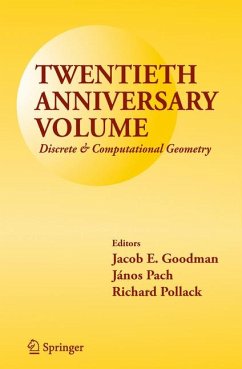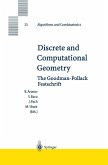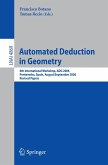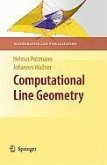The articles in this volume, a number of which solve long-outstanding problems in the field, were chosen by the editors of DCG for the importance of their results, for the breadth of their scope, and to show the intimate connections that have arisen between discrete and computational geometry and other areas of both computer science and mathematics. Apart from the articles, the editors present an expanded preface, along with a set of photographs of groups and individuals who have played a major role in the history of the field during the past twenty years.
Contributors include:
E. Ackerman
P.K. Agarwal
I. Aliev
I. Bárány
A. Barvinok
S. Basu
L.J. Billera
J.-D. Boissonnat
C. Borcea
E. Boros
K. Borys
B. Braun
K. Buchin
O. Cheong
D. Cohen-Steiner
M. Damian
K. Elbassioni
R. Flatland
T. Gerken
J.E. Goodman
X. Goaoc
P. Gronchi
V. Gurvich
S. Har-Peled
J. Hershberger
A. Holmsen
S.K. Hsiao
A. Hubard
J. Jerónimo
L. Khachiyan
R. Klein
C. Knauer
S. Langerman
J.-Y. Lee
M. Longinetti
E. Miller
P. Morin
U.Nagel
E. Nevo
P. Niyogi
I. Novik
J. O'Rourke
J. Pach
I. Pak
M.J. Pelsmajer
S. Petitjean
F. Pfender
R. Pinchasi
R. Pollack
J.S. Provan
K. Przeslawski
R.M. Richardson
G. Rote
M. Schaefer
Y. Schreiber
M. Sharir
J.R. Shewchuk
S. Smale
B. Solomyak
M. Soss
D. stefankovic
G. Vegter
V.H. Vu
S. Weinberger
L. Wu
D. Yost
H. Yu
T. Zell
Dieser Download kann aus rechtlichen Gründen nur mit Rechnungsadresse in A, B, BG, CY, CZ, D, DK, EW, E, FIN, F, GR, HR, H, IRL, I, LT, L, LR, M, NL, PL, P, R, S, SLO, SK ausgeliefert werden.









